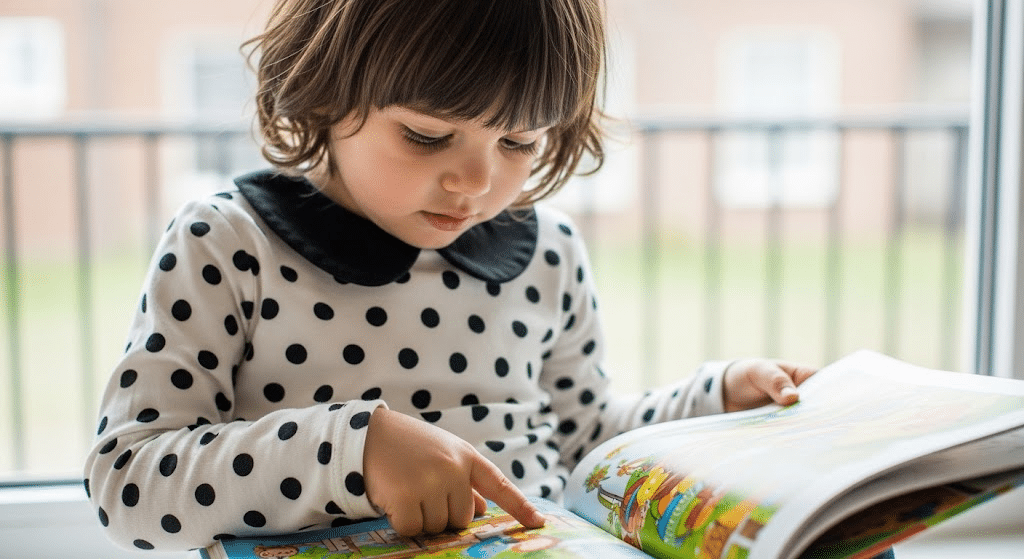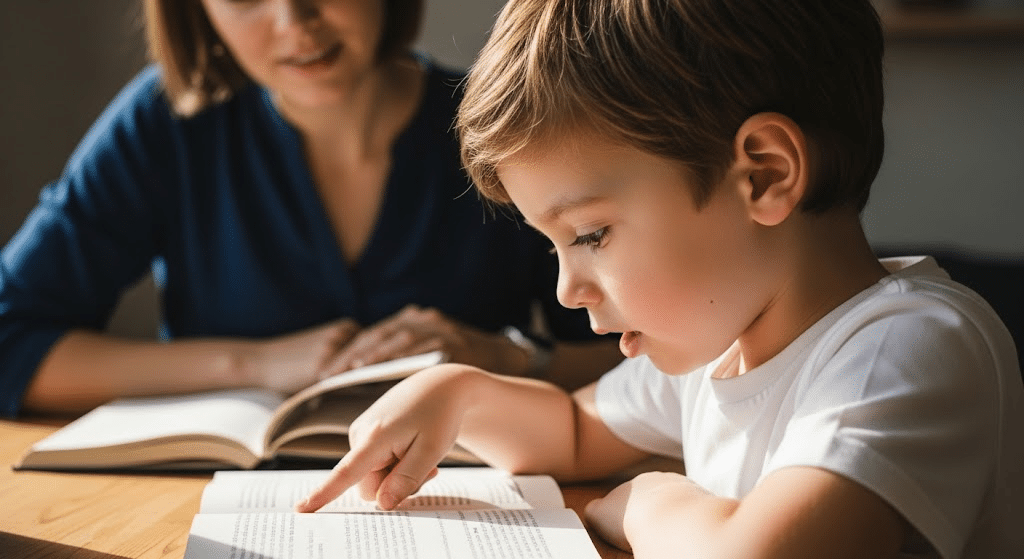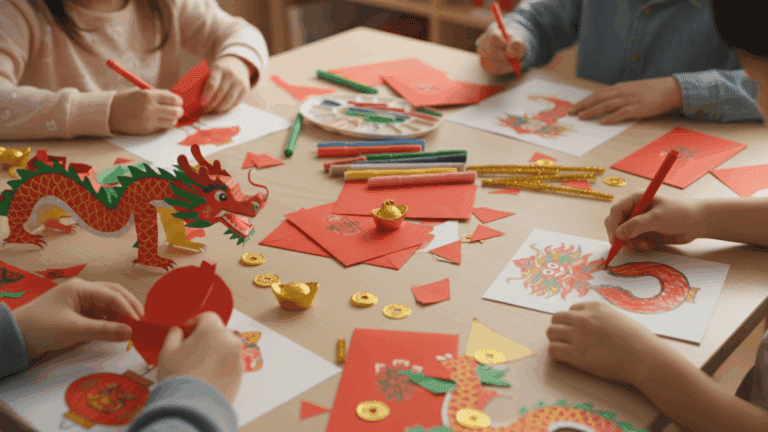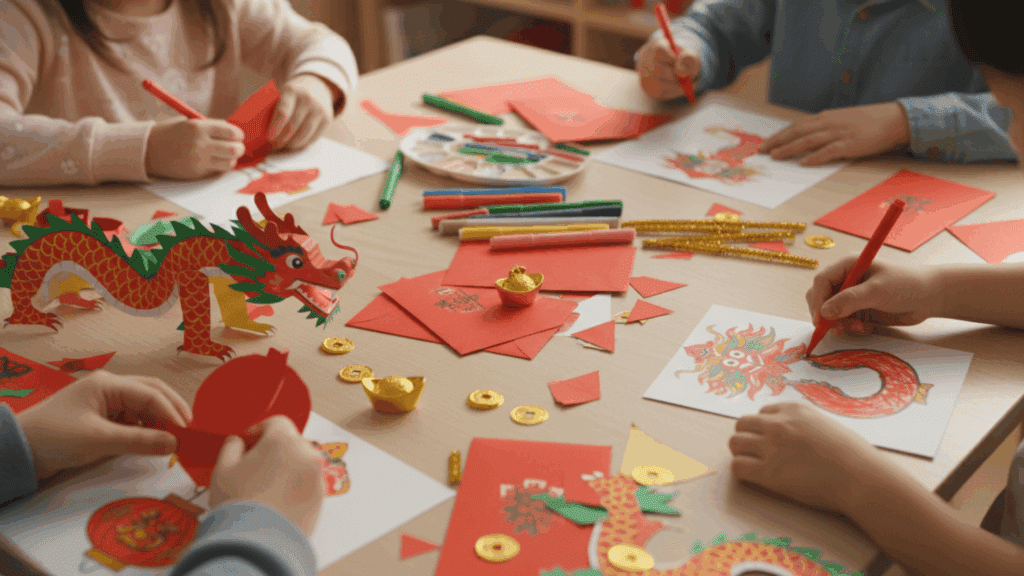Every parent watches their preschooler struggle with a book and wonders if they’re doing enough to help.
Children who master sight words early become confident readers faster than those who don’t. These simple, frequently used words act as building blocks that make reading feel less overwhelming and more enjoyable for young learners.
Understanding why sight words for preschool matter so much can transform how parents and teachers approach early literacy.
Let’s find why these little words make such a big difference in a child’s reading success.
How Sight Words Help Kids Learn to Read
Sight words are common words that children learn to recognize instantly, without sounding them out. Think “the,” “and,” “is,” and “you.” These words appear so frequently in text that quick recognition becomes essential for smooth reading.
Some sight words follow spelling rules and can be decoded, like “can” or “it.” Others break the rules completely, such as “one” or “said.” Young children must memorize these tricky words through repeated exposure.
Dr. Linnea Ehri’s research shows that automatic word recognition frees up mental energy for comprehension.
When preschoolers don’t have to stop and figure out every single word, they can focus on understanding the story. This builds reading confidence and keeps children engaged with books instead of feeling frustrated.
When to Start Teaching Sight Words to Preschoolers?
Most children show readiness for sight words between ages 4 and 5, but every child develops differently. Parents should look for specific signs before introducing these important words.
Signs of Readiness:
- The child recognizes letters and knows some letter sounds
- Shows interest in books and print
- Can focus on activities for 10-15 minutes
- Understands that words carry meaning
How to Start Gradually:
Begin with just 2-3 high-frequency words like “I,” “see,” and “the.” Practice these daily through games, flashcards, and books. Once mastered, add 2-3 more words.
Red Flags to Watch:
Starting too early can frustrate children who aren’t developmentally ready. Signs include resistance to letter activities or inability to sit still for short lessons.
On the flip side, waiting too long means missing the optimal learning window when children’s brains are primed for language acquisition.
Most experts agree that by age 6, sight word instruction becomes much more challenging.
Engaging Strategies to Teach Sight Words

Teaching sight words doesn’t have to mean boring flashcards and endless drilling. I’ve found that children learn best when they’re having fun, so let’s look at some creative methods that make practice feel like play.
Sensory Play
Children trace sight words in sand, salt, or rice while saying them aloud. This multi-sensory approach helps cement word shapes in memory through touch, sight, and sound.
The tactile experience creates stronger neural pathways than traditional paper-and-pencil methods alone.
- Skills learned: Letter formation, muscle memory, word recognition
- Tip: Use colored sand to make it more appealing and encourage slower, deliberate tracing
Visual Memory Games
Classic bingo gets a literacy twist when children match called words to their cards.
The repetitive nature builds automatic recognition while keeping kids entertained. This game format removes pressure while providing multiple exposures to the same words in an enjoyable social setting.
- Skills learned: Quick word identification, listening skills, visual scanning
- Tip: Start with 9-square cards for younger children, then progress to larger grids
Artistic Repetition
Kids paint sight words using different colors for each letter or trace over words multiple times with various colored markers. The artistic element makes practice feel like play.
Creative expression combined with learning helps children associate positive emotions with reading practice and word recognition.
- Skills learned: Fine motor control, color recognition, word memory
- Tip: Use thick brushes and large paper to prevent frustration with fine details
Movement-Based Recall
Traditional hopscotch squares contain sight words instead of numbers. Children hop to specific words when called, combining physical activity with learning.
This active approach works especially well for kinesthetic learners who need movement to process and retain new information effectively.
- Skills learned: Gross motor development, word recognition, following directions
- Tip: Use sidewalk chalk outdoors or tape indoors for easy setup and cleanup
Digital Tools and Printables
Educational apps and printable worksheets offer structured practice with immediate feedback.
Technology appeals to digital natives while providing systematic skill-building. Interactive features like animations and sounds can reinforce learning, while printables allow for offline practice and progress tracking.
- Skills learned: Independent learning, technology literacy, self-pacing
- Tip: Limit screen time to 15-20 minutes and always follow up with hands-on activities
Must-Know Sight Words for Preschool
Not all sight words are created equal. Some appear in children’s books far more often than others, making them essential for early reading success.
Here’s a carefully curated list of the most important sight words that will give preschoolers the biggest boost in their reading confidence.
- a
- I
- is
- it
- in
- on
- up
- me
- my
- to
- the
- we
- go
- you
- and
- he
- she
- am
- at
- be
- not
- no
- yes
- can
- do
- see
- look
- like
- come
- here
- said
- was
- have
- are
- will
- this
- that
- with
- for
- you
- they
- we
- want
Common Challenges and How to Overcome Them

Teaching sight words isn’t always smooth sailing, and I’ve seen many parents get frustrated when their child struggles.
Similar-Looking Words Confusion
Children often mix up words like “was” and “saw” or “then” and “when.” Teachers can help by highlighting the different letters in bright colors and creating visual cues that distinguish each word’s unique features.
Short Attention Spans
Preschoolers typically focus for only 10-15 minutes. Breaking lessons into 5-minute chunks with movement breaks keeps children engaged. Switching between activities every few minutes prevents boredom.
Resistance to Repetition
Some children reject the same flashcards daily. Parents can rotate through different teaching methods weekly – Monday might be sand tracing, Tuesday could be word hunts, and Wednesday brings out the paintbrushes.
Forgetting Previously Learned Words
Regular review prevents this common issue. Mix old words with new ones during practice sessions, and post familiar sight words around the house as constant visual reminders.
Conclusion
Teaching sight words for preschool isn’t just about early reading; it’s about building a foundation that lasts a lifetime.
When children master these essential words, they gain the confidence to tackle bigger books and harder challenges.
Every child learns at their own pace, so patience is key. Whether you choose sensory activities, games, or digital tools, the important thing is to begin.
Your preschooler’s future reading success starts with these simple yet powerful building blocks today.


















